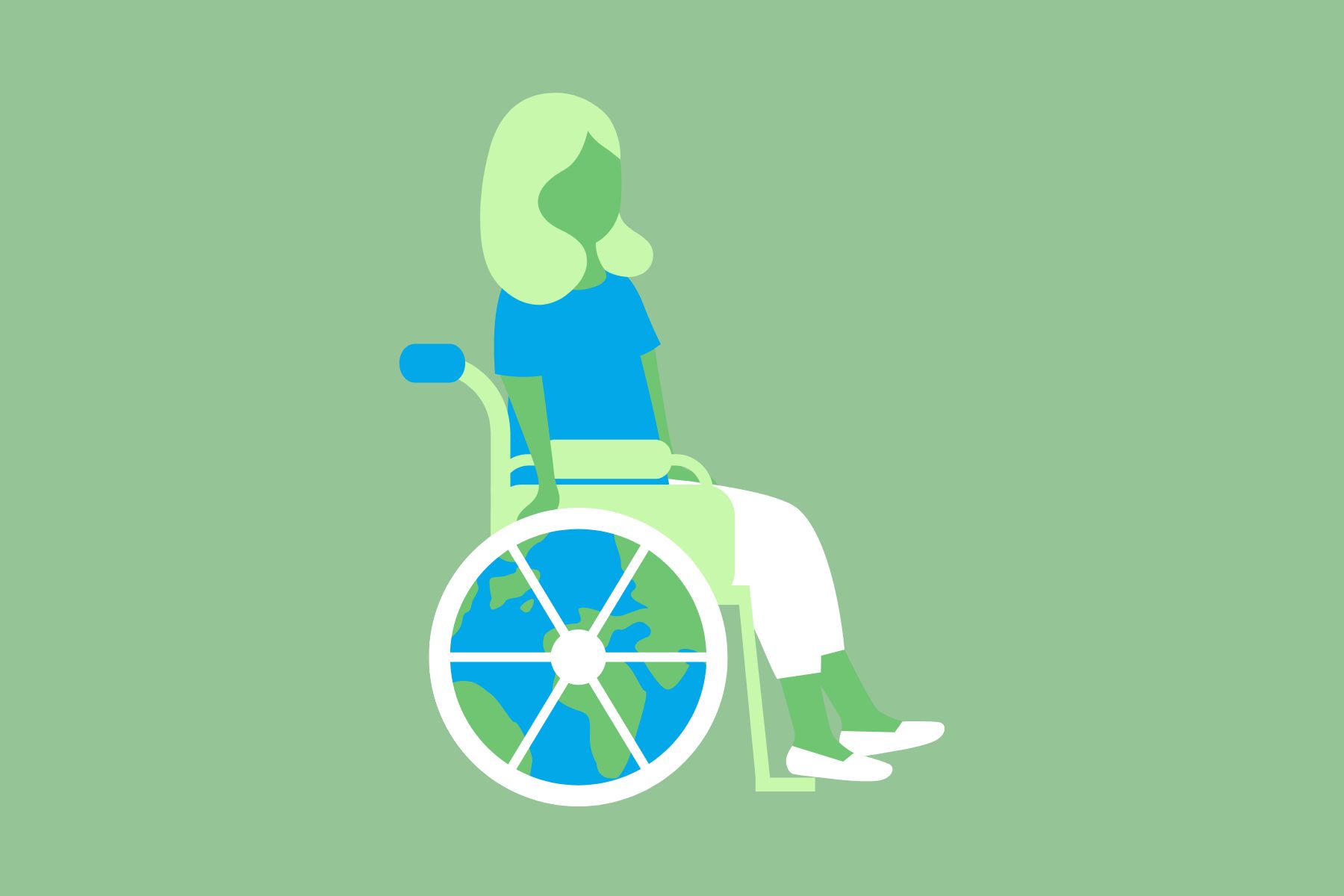Environmentally friendly student life choices often make disabled lives harder

Graphic by Sage Blackwell.
There is a severe lack of disabled representation in conversations about how fast fashion, driving, and single-use plastic affect the environment. When able-bodied individuals complain about single use items, the perspectives of disabled people are often conveniently ignored.
When it comes to avoiding the unsustainable practices of the fast-fashion industry, many point to thrift shopping as a viable alternative. I love thrifting. However, it is not a viable substitute for everyone. Most of Victoria’s thrift stores are located downtown, which can be difficult for people with mobility issues. Once I make it downtown, I have to spend a lot of time on my feet, walking around and carrying heavy bags, which aggravates my chronic pain, meaning thrifting is not a feasible alternative to ordering fast fashion online for me.
Sustainably travelling is another issue I face every day. Gas emissions from driving cars negatively affect the environment, but other more environmentally conscious options are not accessible to me. I am often encouraged to walk or bike to school to reduce carbon emissions — a viable option for many able-bodied individuals — but I physically can’t bike or walk long distances due to my mobility issues.
For able-bodied people, taking the bus is one of the most common ways to travel sustainably, especially if they live too far to bike or walk. As an ambulatory cane-user, taking public transit is not easy either. When I do use my cane, I consistently have to ask people to move so that I can sit in the disabled-priority seating. Simply sitting on the bus will cause me additional pain — bracing against the momentum of the moving bus and trying not to fall onto the people next to me exacerbates my muscle and joint pain, causing aches when I finally arrive at school.
When it comes to single-use plastics and disposable implements, the perspective of disabled people is also overlooked. For many of us, disposable straws and containers are more than just convenient — they actively make disabled lives easier. Getting food anywhere on campus, I am forced to juggle food, drink, my backpack, and my cane all at the same time.
Due to my tremor I end up having to use straws to prevent spillage. Where other food outlets use paper straws as a replacement, which increase the chance of choking as they get soggy and disintegrate with extended use, UVic outlets use cornstarch straws. These straws allow for some of the benefits of plastic straws, like being able to use them with both hot and cold beverages.
Unfortunately, they don’t contain the same flexibility that allows for those with mobility issues to use them, which is a necessary feature for many to maintain independent living. I am not the first person to say that single-use cutlery, straws, and containers are important for the disabled population, but I hope that this makes clear both their importance and the guilt-laden struggle disabled folks experience when selecting what will be less painful for us.
In future conversations about sustainable habits, I hope disabled people are duly considered, more so than they have in the past. Sustainable living is often marketed as one-size-fits all, but disabled people live in the grey, the in-between, juggling pain, spoons, and guilt on a daily basis.








